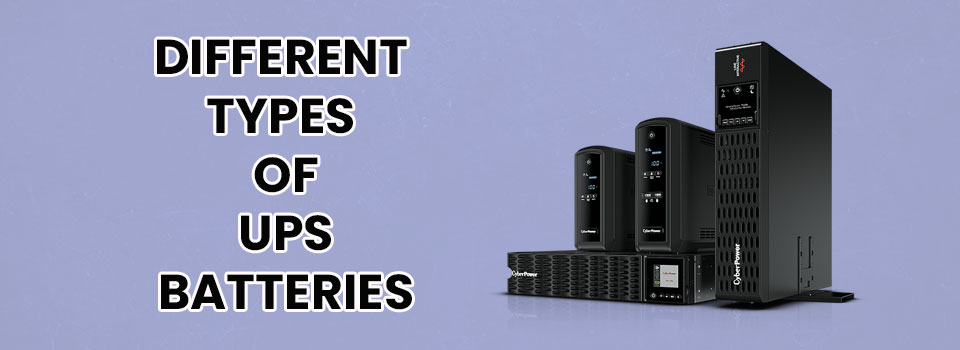
In today’s technology-driven world, ensuring that your devices remain powered during unexpected outages is crucial. An uninterruptible power supply, or UPS, plays a vital role in protecting your electronics and maintaining operations during power interruptions. However, the effectiveness of a UPS largely depends on the quality and suitability of its batteries. Choosing the right UPS batteries can make all the difference in performance, longevity, and reliability.
With a myriad of options available on the market, it can be overwhelming to determine which batteries are best suited for your specific needs. Understanding the key features, types, and maintenance considerations of UPS batteries is essential for making an informed decision. This guide aims to simplify that process, empowering you to select the perfect UPS batteries that will safeguard your equipment and ensure uninterrupted power supply.
Understanding UPS Battery Types
When it comes to uninterruptible power supplies, selecting the right type of battery is crucial for ensuring uninterrupted power during outages. The two most common types of UPS batteries are sealed lead-acid (SLA) and lithium-ion. SLA batteries are the traditional choice, offering reliability and a good balance of cost and performance. They are often found in smaller, consumer-grade UPS systems and can provide sufficient backup time for essential devices.
Lithium-ion batteries are gaining popularity in UPS applications due to their higher energy density and longer lifespan. These batteries are lighter and can provide more power in a smaller footprint, making them ideal for larger, enterprise-level UPS systems where space is a premium. They typically have a longer cycle life than their SLA counterparts, reducing the frequency of replacements and ultimately leading to lower overall costs in the long run.
Another important type of UPS battery is the nickel-cadmium (NiCd) battery, which is less common in modern applications but still relevant in specific industries. NiCd batteries are known for their ability to perform in extreme temperatures and have a longer lifespan compared to SLA batteries. However, they come with a higher purchase price and environmental considerations due to the cadmium content. Understanding these different battery types can help in making an informed decision that meets your backup power needs.
Key Factors to Consider When Choosing UPS Batteries
When selecting UPS batteries, one of the primary factors to consider is the battery type. There are several types of batteries available, including sealed lead acid, lithium-ion, and nickel-cadmium. Each type has its own advantages and disadvantages in terms of lifespan, maintenance requirements, and cost. Sealed lead acid batteries are commonly used due to their reliability and lower upfront cost, while lithium-ion batteries offer longer life and lighter weight but at a higher price point. Assessing the specific needs of your equipment and environment will help determine the most suitable battery type.
UPS Batteries
Another critical factor is the capacity of the UPS batteries, which is measured in ampere-hours (Ah). The capacity directly influences how long your UPS can provide power during an outage. It is essential to calculate your total load and choose batteries that can support that load for the desired duration. Oversizing your UPS batteries can result in unnecessary costs, while undersizing can lead to insufficient run time during critical situations. Ensure you account for future expansion and device upgrades when making this calculation.
Lastly, consider the warranty and support offered by the manufacturer. A reliable warranty can provide peace of mind, as it indicates the manufacturer’s confidence in their product. Additionally, excellent customer support can be invaluable if you encounter issues. Research customer reviews and ratings to gauge the experience of others with different brands and models. A trusted brand with good support can make a significant difference in your overall satisfaction and the longevity of your investment in UPS batteries.
Maintenance Tips for Longevity
To ensure the longevity of your UPS batteries, regular maintenance is essential. Start by keeping the UPS unit in a cool and dry environment, as excessive heat can significantly reduce battery life. Monitoring the temperature around the unit is crucial. Ideally, your UPS should operate in conditions between 20 to 25 degrees Celsius. Additionally, ensure that the air vents are free from dust and obstructions to facilitate proper airflow, which helps in keeping the batteries cool.
Perform routine checks on your UPS batteries to identify any signs of wear or damage. This includes inspecting the connections and terminals for corrosion and ensuring that all parts are securely fastened. If you notice any swelling or leakage, it’s essential to replace the batteries immediately. Regular testing of the UPS through self-diagnostics or manual tests will help you stay aware of the battery’s performance and alert you to any potential issues before they become serious problems.
Lastly, consider performing a full discharge and recharge cycle for your UPS batteries at least once every six months. This process helps maintain the battery’s capacity and ensures that it remains functional and efficient when you need it most. Additionally, keep track of the battery’s age and the manufacturer’s recommendations regarding replacement intervals, as older batteries may not hold charge effectively, compromising your power backup system’s reliability.
